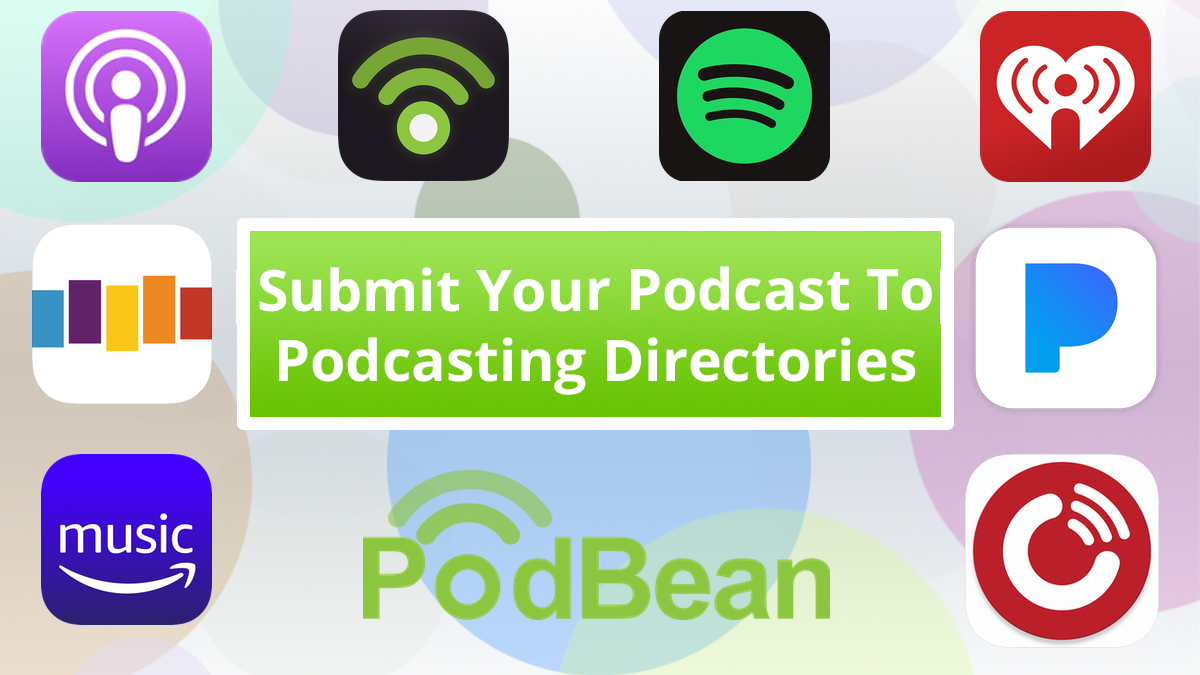Curious about the podcasting phenomenon and wondering, “What is podcast?” You’re in the right place. In this guide, we unravel the mysteries of podcasts, breaking down the fundamentals, exploring their impact, and shedding light on why they’ve become an integral part of digital culture.
Join us as we embark on a journey to demystify the world of podcasting and provide you with insights that not only answer the burning question, “What is a podcast?” but also equip you to navigate this engaging realm of audio content. Welcome to the ultimate guide that aims to land your understanding of podcasts on the first page of knowledge.
Table of Contents:
Definition of a Podcast
A podcast is a digital audio or video file that is made available on the internet for streaming or downloading. The term “podcast” is a combination of “iPod,” Apple’s portable media player, and “broadcast.” Contrary to its name, podcasts are not limited to iPods and can be accessed on various devices, including smartphones, tablets, and computers.
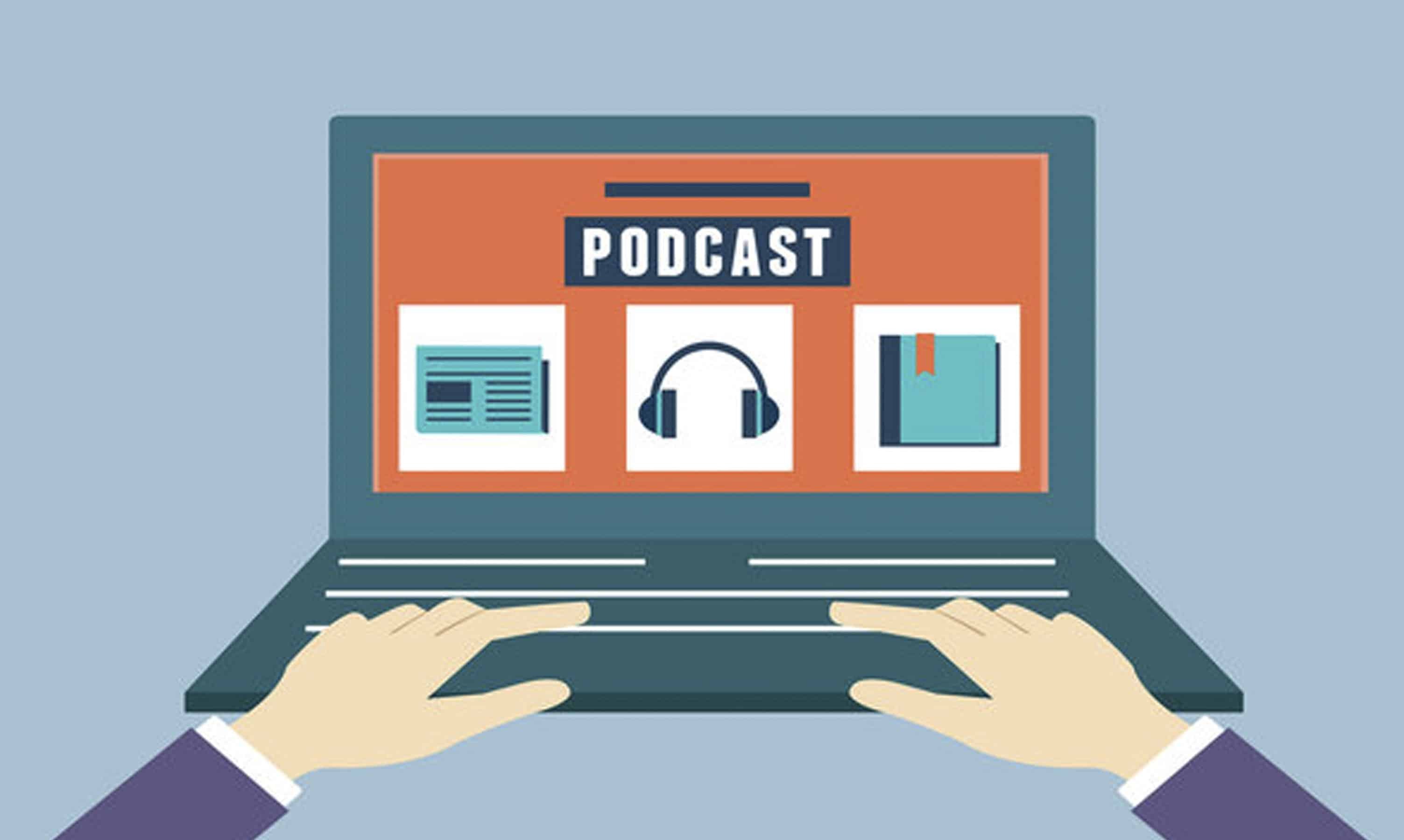
Key Characteristics of Podcasts:
Audio-Centric: Podcasts are primarily an audio medium, featuring spoken content. They provide a platform for individuals or groups to share information, stories, interviews, discussions, and more through voice recordings.
On-Demand Access: One of the defining features of podcasts is on-demand access. Listeners can stream or download episodes at their convenience, allowing for flexibility in consumption.
Subscription Model: Podcasts often use a subscription model. Listeners can subscribe to a podcast series, and new episodes are automatically delivered to their devices when released. This subscription-based approach fosters audience loyalty.
Diverse Content Formats: Podcasts come in various formats, such as interviews, solo commentary, panel discussions, storytelling, and educational content. This diversity caters to a wide range of interests and preferences.
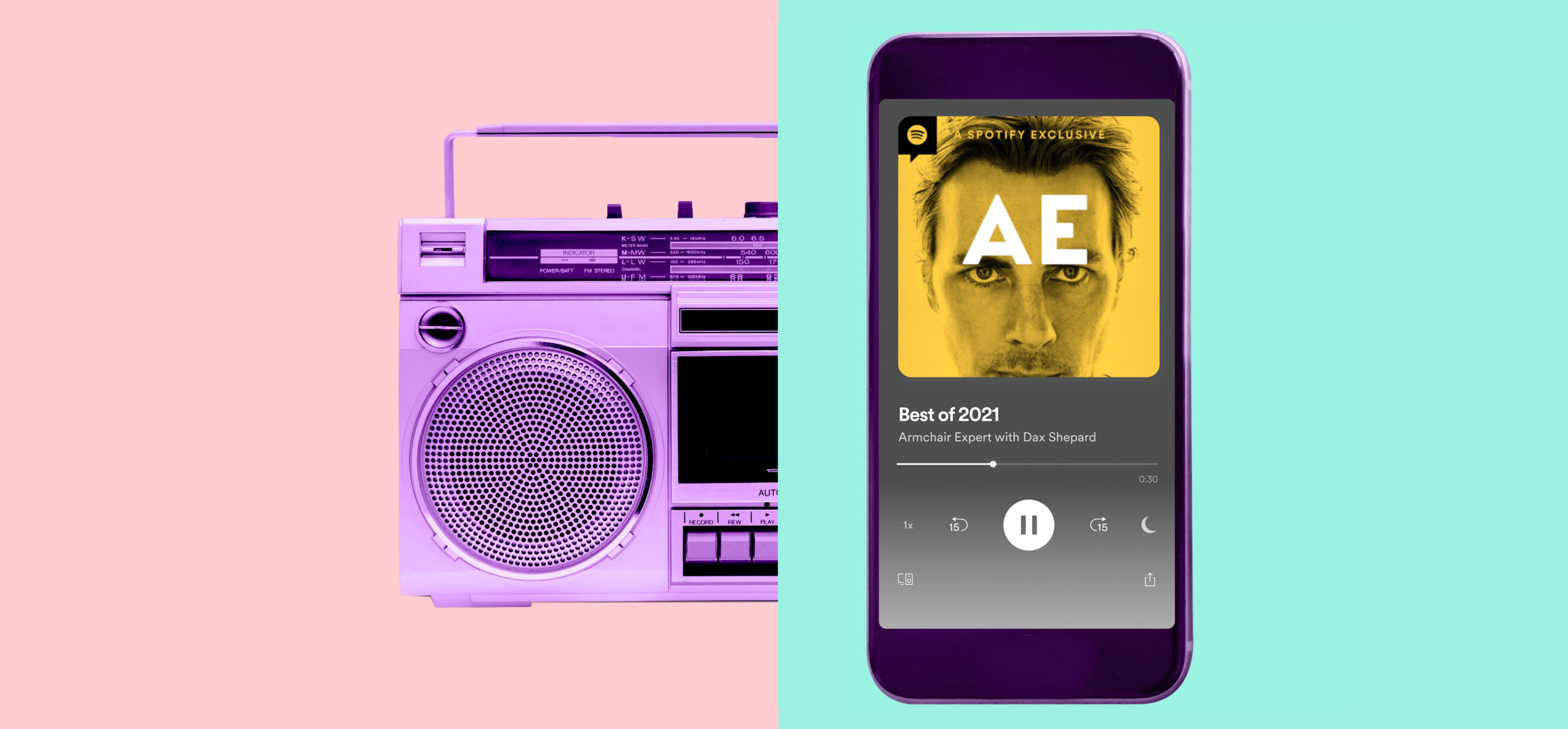
How Podcasts Differ from Traditional Broadcasting:
- Accessibility:
- Podcasts: On-the-go accessibility, allowing listeners to tune in from anywhere with an internet connection.
- Traditional Broadcasting: Often requires specific channels or frequencies, limiting accessibility.
- On-Demand Content:
- Podcasts: Provides on-demand content, giving users the flexibility to choose when and where they consume shows.
- Traditional Broadcasting: Follows a fixed schedule, offering less flexibility in content consumption.
- Niche Specialization:
- Podcasts: Caters to niche audiences, enabling creators to explore specialized topics and build dedicated communities.
- Traditional Broadcasting: Tends to target broader audiences, potentially overlooking niche interests.
- Connection with Audience:
- Podcasts: Fosters an intimate connection between hosts and listeners through a conversational and community-building approach.
- Traditional Broadcasting: May lack the personalized connection found in the more interactive podcast format.
- Varied Format Options:
- Podcasts: Embraces diverse formats, from interviews and storytelling to roundtable discussions, allowing creative expression.
- Traditional Broadcasting: Often follows a more rigid format, limiting the variety of content styles.
- Entry Barriers for Creators:
- Podcasts: Lower entry barriers; creating and publishing podcasts is more accessible than traditional broadcasting.
- Traditional Broadcasting: Often requires significant resources and infrastructure for content production.
- Global Reach:
- Podcasts: Transcends geographical boundaries, offering a global reach that traditional broadcasting may find challenging.
- Traditional Broadcasting: May have limitations in reaching a global audience, especially in remote areas.
- Monetization Opportunities:
- Podcasts: Presents various monetization avenues, including sponsorships, ads, and listener support.
- Traditional Broadcasting: Typically relies on advertising revenue, with limited direct listener support.
- User-Controlled Experience:
- Podcasts: Gives listeners control over their experience, with the ability to pause, rewind, or fast-forward through content.
- Traditional Broadcasting: Provides a linear experience with less control over playback for the audience.
- Industry Landscape:
- Podcasts: Dynamically evolving industry with innovations, new formats, and emerging technologies shaping its trajectory.
- Traditional Broadcasting: While evolving, may face challenges in adapting quickly to emerging trends.
History of Podcasting
The history of podcasting is a journey marked by innovation, technological advancements, and the desire for democratized media. The roots of podcasting can be traced back to the early 2000s.
.webp)
Origins and Coining of the Term
The term “podcast” was coined in 2004 by journalist Ben Hammersley in an article for The Guardian. It emerged as a blend of “iPod,” Apple’s popular portable media player, and “broadcast.” However, the concept of distributing audio content online had already been taking shape.
Emergence of RSS Feeds
Podcasting’s foundation lies in the development of Really Simple Syndication (RSS) feeds. These feeds allowed content producers to push updates to subscribers automatically. This innovation made it possible for users to subscribe to and receive new podcast episodes seamlessly.
Breakthrough Years
The breakthrough years for podcasting were around 2005–2006. During this period, platforms like iTunes began supporting podcasts, making them easily accessible to a broader audience. This development significantly contributed to the mainstream adoption of podcasting.
Pioneering Podcasts
Pioneering podcasts such as “The Ricky Gervais Show” and “This American Life” gained popularity, showcasing the diversity of content that podcasts could offer. This era saw a surge in independently produced podcasts covering an array of topics.
Evolution of Podcasting Platforms
As podcasting continued to gain traction, dedicated platforms and apps were developed to enhance the user experience. Apple Podcasts, Spotify, and Google Podcasts are among the leading platforms that have played a pivotal role in the growth of podcasting.
Mainstream Recognition
In recent years, podcasts have gained mainstream recognition, with high-profile individuals and organizations entering the podcasting space. The medium’s popularity has surged due to its accessibility and the ability to cater to niche audiences.
How Podcasts Work
Understanding how podcasts work involves unraveling the technical processes that enable the creation, distribution, and consumption of audio content.
1. Content Creation: Recording and Editing
Podcasts begin with content creation. Creators use recording equipment such as microphones and audio editing software to produce episodes. This step involves scripting, recording voiceovers, and editing to ensure high-quality content.

2. Creating an RSS Feed
The backbone of podcast distribution lies in the creation of an RSS (Really Simple Syndication) feed. This XML file contains information about the podcast, including episode details, publication dates, and media files. The RSS feed allows podcast directories and platforms to automatically update with new content.
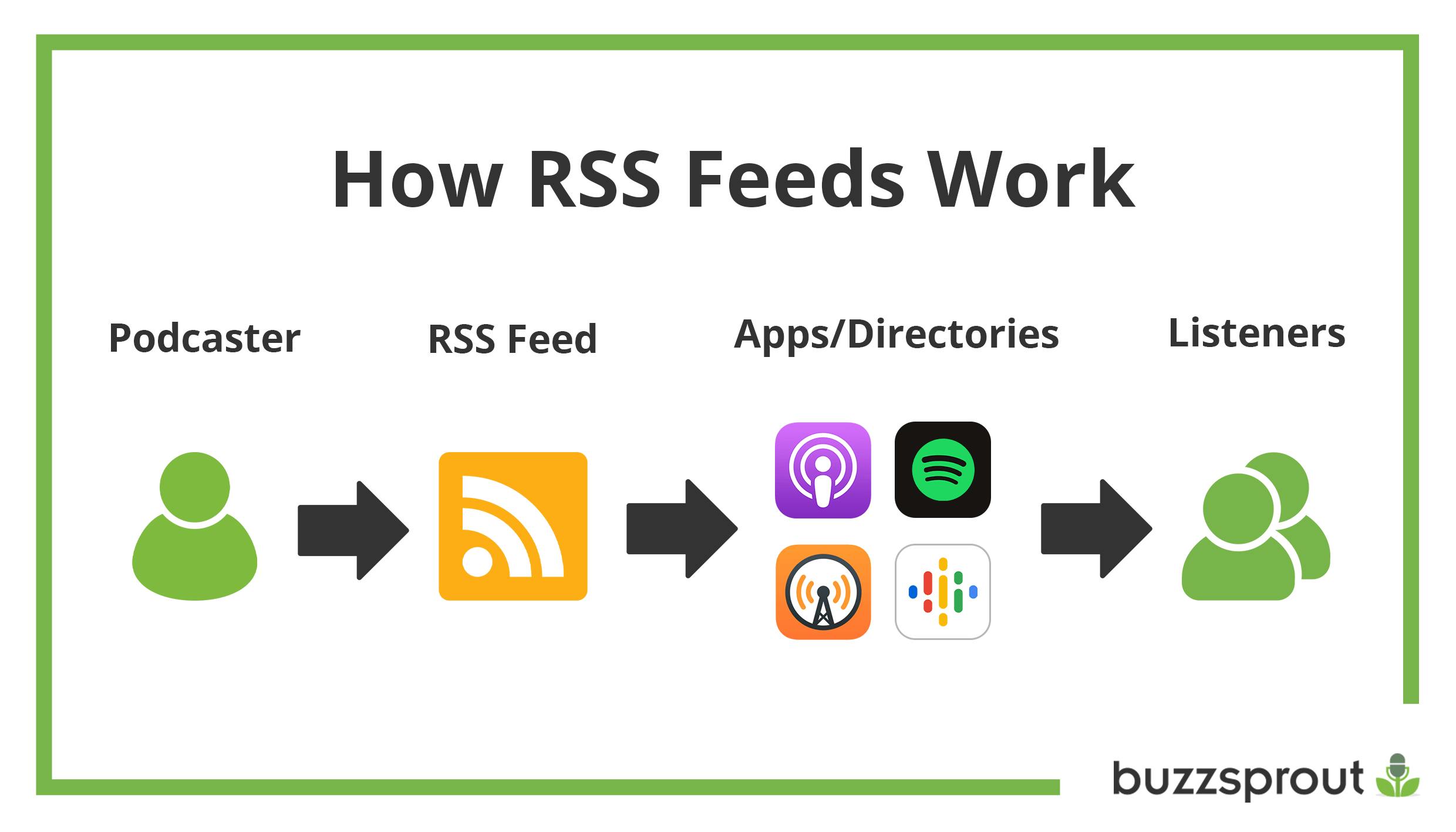
3. Publishing on Hosting Platforms
Once an episode is produced and the RSS feed is generated, it needs to be hosted on a platform. Podcast hosting platforms, like Libsyn, Podbean, or Anchor, store media files and distribute the RSS feed to podcast directories.
![Podcast Hosting Explained: The Podcasting Beginner's Guide [Updated for 2021] | Captivate](https://www.captivate.fm/wp-content/uploads/2020/10/Podcast_Host_Directory-1024x370.png)
Podbean Review | Best Podcast Hosting Plan for 2024
Libsyn Reviews and Pricing Plan | Does it Worth Your Money?
4. Distribution to Podcast Directories
Podcast directories, such as Apple Podcasts, Spotify, Google Podcasts, and others, aggregate content from various podcasts. They use the information from the RSS feed to update their databases, making new episodes available to subscribers.
5. Subscription and Automatic Updates
Listeners subscribe to podcasts through their preferred platform. Subscribing ensures that new episodes are automatically downloaded or streamed to the listener’s device when they are released. This on-demand access is a key feature of podcasts.
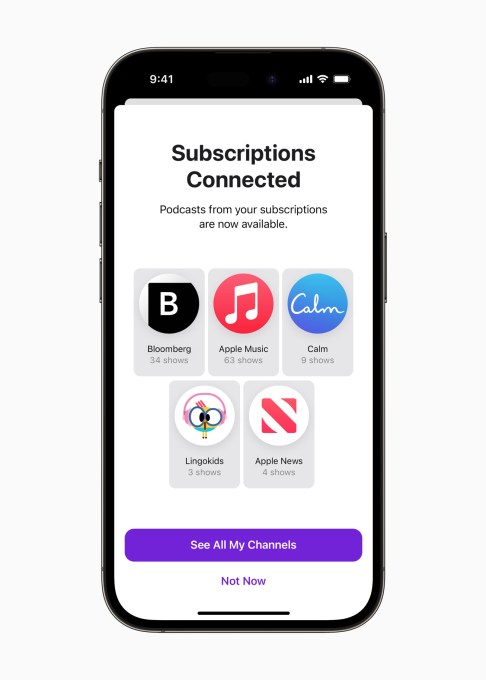
6. Listening Experience
Listeners can enjoy podcasts on a variety of devices, including smartphones, tablets, and computers. They can choose to stream episodes or download them for offline listening. The flexibility in consumption is one of the reasons podcasts have become a popular medium.
Podcast Formats
Podcasts are a versatile medium that comes in various formats, each offering a unique listening experience. The format a podcast takes often depends on the content creator’s goals, style, and the nature of the subject matter.
1. Interviews: Conversations with Experts
In the interview format, podcasters invite guests—experts, thought leaders, or individuals with unique perspectives—to engage in conversations. This format allows for in-depth exploration of topics and provides listeners with valuable insights.

2. Solo Shows: One Voice, Many Insights
Solo shows feature a single host sharing their thoughts, experiences, and expertise. This format is highly personal, allowing hosts to connect directly with their audience. It’s an excellent choice for storytelling and sharing in-depth knowledge.

3. Panel Discussions: Diverse Perspectives
Panel discussions involve a group of hosts or guests engaging in conversations. This format brings together diverse perspectives, fostering dynamic and lively discussions on various topics.
4. Storytelling: Narratives and Narrators
Storytelling podcasts present narratives often enriched with sound effects, music, and compelling storytelling techniques. This format is popular for conveying engaging stories, true crime narratives, and fictional tales.

5. Educational Content: Learning on the Go
Educational podcasts focus on sharing knowledge and insights on specific subjects. They serve as valuable resources for listeners looking to learn new skills, stay informed, or gain expertise in a particular area.
Podcasts often blend these formats, creating a rich and diverse landscape. Content creators may choose a format based on their objectives and the preferences of their target audience.
Advantages of Podcasting
Podcasting has surged in popularity due to a myriad of advantages that it offers for both creators and listeners. Let’s explore the key benefits of this dynamic and accessible medium.
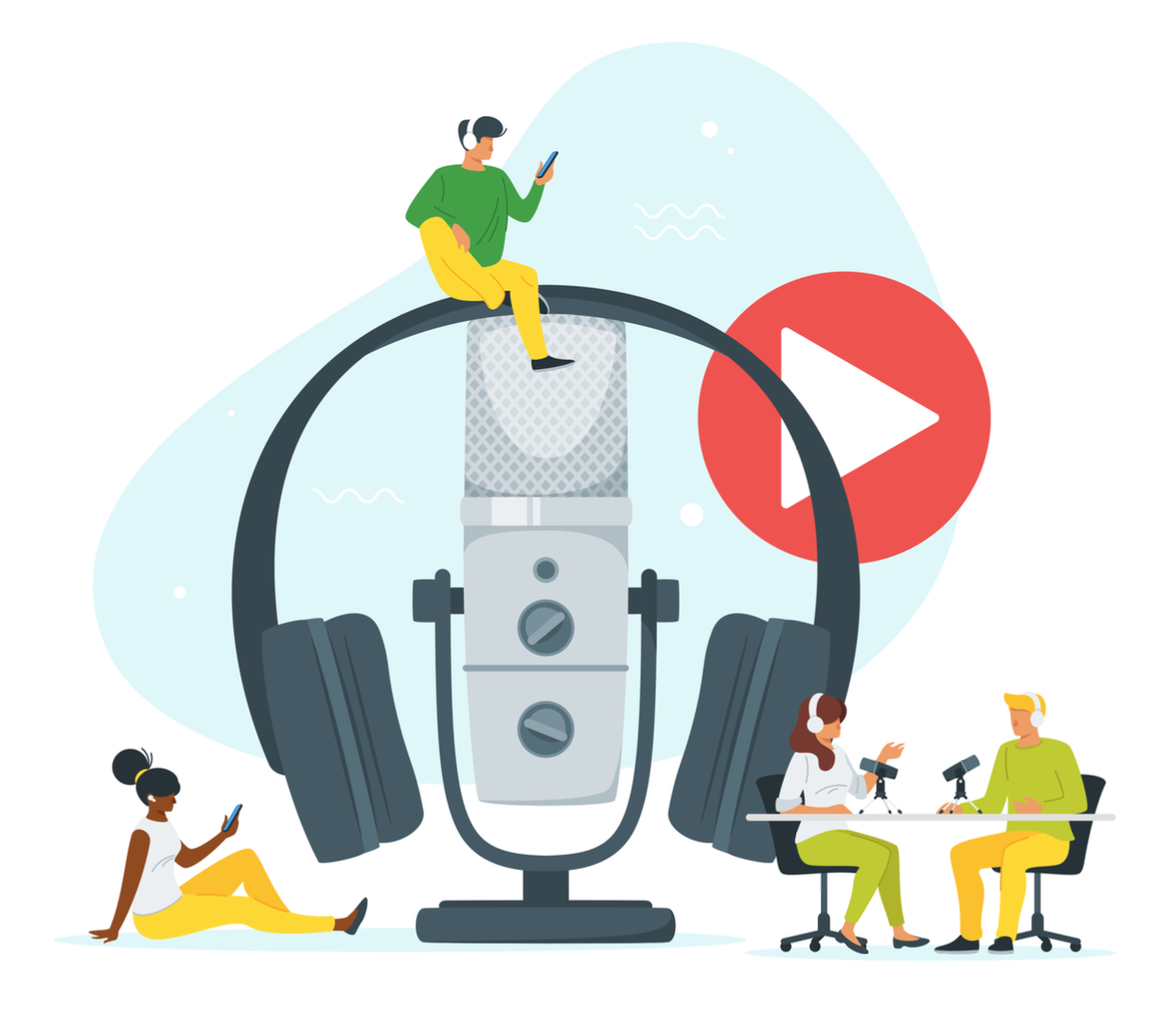
1. Accessibility and Convenience
Podcasts are accessible to anyone with an internet connection, providing a convenient way for people to consume content on the go. Whether commuting, exercising, or doing household chores, listeners can engage with podcasts at their own pace.
2. Niche Content and Specialized Audiences
Podcasting allows content creators to delve into niche topics that may not have a place in mainstream media. This flexibility enables the creation of content tailored to specialized audiences, fostering a sense of community and connection.
3. Building Authority and Personal Branding
For creators, podcasting serves as a powerful platform to build authority in a particular domain. Consistent, quality content can establish hosts as thought leaders, contributing to personal branding and opening opportunities for collaboration.
4. Flexible Content Formats
Podcasting accommodates diverse content formats, including interviews, solo shows, panel discussions, and storytelling. This flexibility allows creators to choose the format that best suits their message, enhancing creativity and engagement.
5. Establishing a Genuine Connection with Audiences
The intimate nature of podcasting, often involving personal narratives and conversations, fosters a genuine connection between hosts and listeners. This authenticity is a key factor in the strong and loyal communities that podcasts can build.
6. Monetization Opportunities
Podcasters have various monetization avenues, including sponsorships, advertising, listener support, and merchandise sales. As podcasts attract dedicated audiences, they become attractive spaces for businesses looking to reach specific demographics.
Podcasting Equipment and Setup
Creating a podcast involves setting up the right equipment to ensure clear and high-quality audio recordings. Here’s a guide to essential podcasting equipment and the basic setup you’ll need to get started.
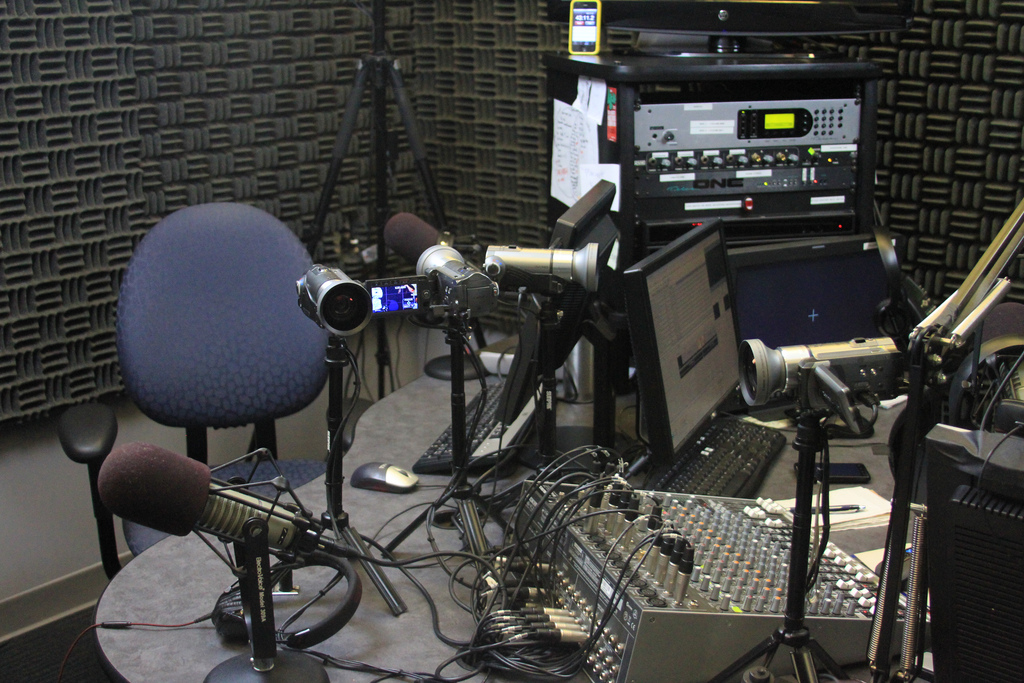
1. Microphone
The cornerstone of your podcasting equipment is a good-quality microphone. USB microphones are suitable for beginners, offering ease of use and decent audio quality. However, for professional-grade recordings, consider an XLR microphone connected to an audio interface.
2. Headphones
Investing in a pair of closed-back headphones is crucial for monitoring your recordings and ensuring audio clarity. Closed-back headphones help prevent audio leakage during recording.
3. Pop Filter and Windscreen
Attach a pop filter to your microphone to minimize plosive sounds (like “p” and “b” sounds). A windscreen is also useful for outdoor recordings or if your microphone is sensitive to wind noise.
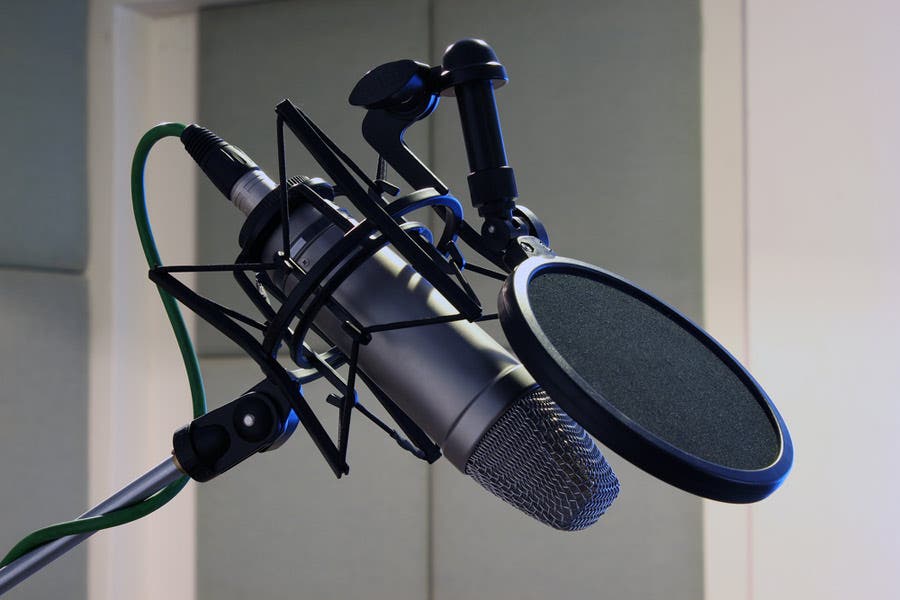
4. Boom Arm or Microphone Stand
A boom arm or microphone stand helps position the microphone at an optimal distance and angle for recording. This reduces handling noise and allows for a consistent recording setup.
5. Acoustic Treatment
Consider adding acoustic treatment to your recording space to minimize echo and background noise. This can be achieved through foam panels, bass traps, or even DIY solutions like blankets.
6. Recording and Editing Software
Choose recording software compatible with your setup. Audacity and GarageBand are popular choices for beginners, while more advanced users may prefer software like Adobe Audition or Hindenburg Journalist.

7. Audio Interface (for XLR Microphones)
If you’re using an XLR microphone, an audio interface is necessary to connect the microphone to your computer. Focus on interfaces with good preamps for clear audio.
8. Recording Space
Choose a quiet and controlled environment for recording. Ensure minimal background noise, and consider adding soundproofing elements if needed.
Remember, your podcasting equipment doesn’t need to be extravagant when starting. As you gain experience, you can gradually upgrade your setup based on your specific needs.
Popular Podcast Platforms
Once you’ve created your podcast, the next step is to choose the right platforms for publishing and sharing your content. Here are some of the most popular podcast platforms where you can showcase your podcast to a wide audience.
1. Apple Podcasts
Apple Podcasts is one of the largest and most widely used podcast platforms. It’s available on iOS devices and allows users to discover, subscribe to, and listen to podcasts. Getting your podcast on Apple Podcasts is essential for reaching a broad audience.
2. Spotify
Spotify has become a major player in the podcasting world. It offers a user-friendly interface and allows creators to reach millions of Spotify users. Podcasts on Spotify can be easily discovered through the platform’s search and recommendation features.
3. Google Podcasts
Google Podcasts is a platform that makes podcasts easily accessible to Android users. It integrates with Google Assistant and provides a straightforward interface for discovering and listening to podcasts.
4. Stitcher
Stitcher is a podcast app that offers a mix of free and premium content. It provides users with features like creating playlists and downloading episodes for offline listening.
5. Podbean
Podbean is both a podcast hosting service and a podcast directory. It provides tools for hosting, monetizing, and promoting podcasts. Creators can publish their podcasts on Podbean and reach a global audience.
Podbean Review | Best Podcast Hosting Plan for 2024
6. Overcast
Overcast is a user-friendly podcast player known for its powerful features. It includes options for creating custom playlists, adjusting playback speed, and discovering new podcasts.
7. Anchor
Anchor is a podcast hosting platform that also allows for easy podcast creation and distribution. It’s known for its simplicity and offers tools for recording, editing, and publishing podcasts directly from a mobile device.
8. Pocket Casts
Pocket Casts is a popular podcast player app that offers features such as episode search, playback speed controls, and the ability to create custom episode filters.
By leveraging these popular podcast platforms, you can significantly expand the reach of your podcast and connect with a diverse audience.
What is Podcast? Monetization Strategies
Podcasting presents various opportunities for creators to generate income. Here are effective monetization strategies to explore as you build and grow your podcast.

1. Sponsorships and Advertisements
Partnering with sponsors and advertisers is a common way for podcasters to monetize their content. As your audience grows, you can attract advertisers relevant to your niche. Advertisers may pay for pre-roll, mid-roll, or post-roll ad placements in your episodes.
2. Affiliate Marketing
Integrate affiliate marketing into your podcast by promoting products or services related to your content. Earn a commission for each sale or action generated through your unique affiliate links. Choose affiliates that align with your audience’s interests.
3. Listener Donations and Crowdfunding
Engage with your audience by seeking listener donations or launching crowdfunding campaigns. Platforms like Patreon allow listeners to support your podcast financially in exchange for exclusive content, early access, or other perks.
4. Premium Content and Memberships
Offer premium content or membership subscriptions to your audience. Create exclusive episodes, bonus content, or access to a community forum for paying subscribers. Platforms like Supercast can help facilitate premium content delivery.
5. Merchandising and E-commerce
Create and sell merchandise related to your podcast. This can include branded apparel, mugs, stickers, or any other items that resonate with your audience. Set up an e-commerce store to streamline the sales process.
6. Live Events and Ticket Sales
Host live events, either in-person or virtual, and sell tickets to your audience. Live shows, Q&A sessions, or special events can create unique experiences for your listeners, and ticket sales contribute to your podcast’s revenue.
7. Podcast Networks and Partnerships
Join podcast networks or seek partnerships with other content creators. Network affiliations can provide opportunities for cross-promotion, shared sponsorships, and collaboration on special projects.
Explore these monetization strategies based on your podcast’s niche, audience, and goals. As you implement these strategies, remember to maintain a balance that enhances the listener experience while generating revenue for your podcasting endeavors.
What is Podcsast? Tips for Starting a Podcast
Embarking on a podcasting journey can be both exciting and rewarding. Here are some essential tips to guide you as you start your own podcast.
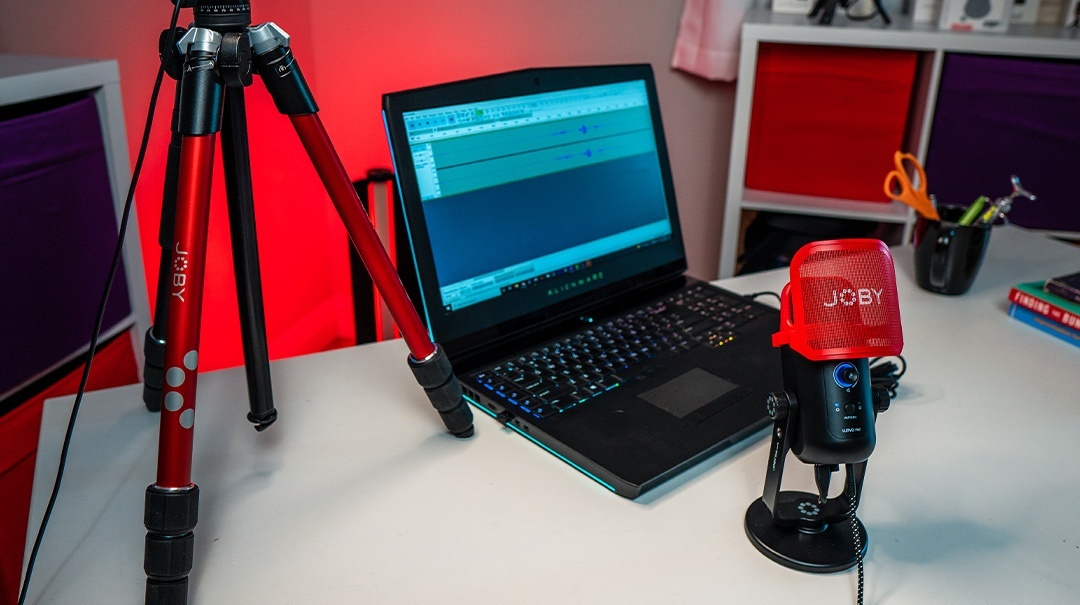
1. Define Your Niche and Audience
Identify a specific niche or topic for your podcast that aligns with your interests and expertise. Understanding your target audience is crucial for creating content that resonates with listeners.
2. Invest in Quality Equipment
While you don’t need to start with a professional studio setup, investing in a good microphone, headphones, and basic recording equipment is essential. Clear audio quality enhances the overall listening experience.
3. Plan and Structure Your Episodes
Outline your episodes with a clear structure. Plan your content, including an introduction, main segments, and a conclusion. This helps maintain a flow and keeps listeners engaged.
4. Focus on Consistency
Consistency is key in podcasting. Establish a regular release schedule that suits your capacity. Whether it’s weekly, bi-weekly, or monthly, consistency helps build audience trust and anticipation.
5. Create Engaging Cover Art and Branding
Design visually appealing cover art that reflects your podcast’s identity. Consistent branding across platforms helps your podcast stand out and leaves a memorable impression on potential listeners.
6. Optimize for SEO
Optimize your podcast title, description, and episode titles for search engines. Include relevant keywords, especially your focus keyword, to enhance discoverability on podcast platforms and search engines.

7. Engage with Your Audience
Build a connection with your audience through social media, email newsletters, or a dedicated website. Encourage feedback, respond to comments, and create a community around your podcast.
8. Learn and Iterate
Podcasting is a learning process. Be open to feedback, adapt your approach, and continuously refine your content. Learning from both successes and challenges is crucial for podcast growth.
Starting a podcast requires a balance of creativity, technical know-how, and dedication. Use these tips as a foundation for your podcasting journey, and enjoy the process of sharing your passion with the world.
Podcast Community and Culture
Beyond creating content, podcasts thrive on the sense of community and culture they cultivate. Building a strong community around your podcast contributes significantly to its success.
![Best Hiphop Podcasts [2023] Top 12 Shows - Goodpods](https://storage.googleapis.com/goodpods-images-bucket/episode_images/972867bc0c55babcdb0013be0ef0a4628e05e13ae23c4b2c826767f308abeff4.jpg)
1. Encourage Listener Interaction
Foster a sense of community by encouraging listener interaction. Prompt discussions on social media, ask for listener feedback, and incorporate audience questions into your episodes. Engaging with your audience creates a participatory culture.
2. Create a Dedicated Online Space
Establish a dedicated online space for your community, whether it’s a forum, social media group, or a platform like Discord. This space allows listeners to connect with each other and with you, building a community beyond the episodes.
3. Organize Live Events and Meetups
Organize live events, virtual or in-person, to bring your community together. Whether it’s a live recording, Q&A session, or a meetup, these events strengthen the sense of community and provide unique experiences for your listeners.
4. Highlight Listener Stories
Celebrate your listeners by featuring their stories or experiences on your podcast. This not only showcases the diversity of your audience but also reinforces the idea that your podcast is a shared space for everyone.
5. Collaborate with Other Podcasters
Collaborating with other podcasters fosters a sense of unity within the podcasting community. Guest appearances, joint episodes, or cross-promotions can introduce your audience to new voices and perspectives.
6. Celebrate Milestones with Your Audience
Acknowledge and celebrate milestones, both big and small, with your audience. Whether it’s reaching a certain number of episodes or hitting a subscriber milestone, involving your community in these celebrations strengthens their connection to your podcast.

7. Establish Clear Community Guidelines
Create and communicate clear community guidelines to ensure a positive and inclusive environment. Establishing ground rules helps maintain a respectful culture and sets expectations for community members.
By actively cultivating a sense of community and a positive podcast culture, you not only strengthen the bond with your audience but also create an environment where your podcast can flourish.
Podcast Trends
The podcasting landscape is dynamic, with evolving trends shaping the industry. Staying informed about these trends is crucial for podcasters seeking to adapt and thrive in the ever-changing digital audio space.
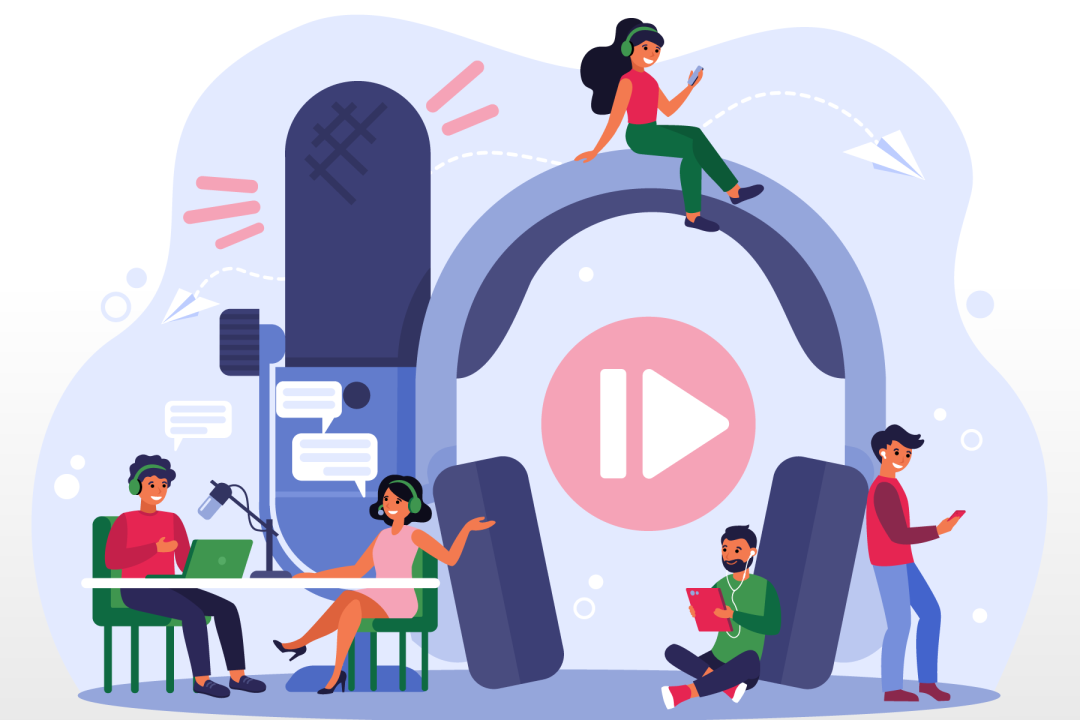
1. Video Podcasting on the Rise
Video podcasting, where hosts record both audio and video content, is gaining traction. Platforms like YouTube and social media have become popular spaces for hosting video podcasts, providing a new dimension to the listening experience.
2. Interactive and Live Podcasting
Live and interactive podcasting is becoming more prevalent. Platforms like Clubhouse and Twitter Spaces allow podcasters to engage with their audience in real-time. Live recordings, Q&A sessions, and interactive discussions contribute to a more engaging experience.
3. Monetization Beyond Ads
Podcasters are exploring diverse monetization strategies beyond traditional ads. This includes premium content subscriptions, listener donations, and exclusive memberships. Creators are finding new ways to generate revenue while providing unique value to their audience.
4. Serialized Storytelling
Serialized storytelling, where podcast episodes are part of a continuous narrative, is gaining popularity. This format, often associated with true crime and fiction podcasts, encourages listeners to stay engaged across multiple episodes.
5. Inclusivity and Diversity
There’s a growing emphasis on inclusivity and diversity in podcasting. Creators are recognizing the importance of representing diverse voices and perspectives. This trend contributes to a richer podcasting landscape that resonates with a broader audience.
6. Short-form and Micro Podcasts
Short-form and micro podcasts are on the rise, catering to listeners seeking concise and focused content. These podcasts often cover specific topics in brief episodes, providing information in a quick and digestible format.
As you navigate the podcasting landscape, keeping an eye on these trends can inspire innovation and help you align your content with the evolving preferences of your audience.
Additional Resources
In addition to podcasts, there are various supplementary resources that can enhance your podcasting experience, knowledge, and skills. Here are some valuable resources to explore:
1. Podcasting Courses and Workshops
Consider enrolling in online courses or workshops dedicated to podcasting. Platforms like Udemy, Coursera, and Podcasting platforms often offer courses on podcast creation, production, and promotion. These resources can provide structured learning and expert guidance.
2. Podcasting Communities
Joining podcasting communities allows you to connect with fellow podcasters, share experiences, and gain insights. Platforms like Reddit, Facebook Groups, and podcasting forums provide spaces for networking, collaboration, and troubleshooting.
3. Podcasting Books and Guides
Explore books and guides dedicated to the art and business of podcasting. Authors often share their experiences, tips, and strategies for success. Notable titles include “Podcasting For Dummies” by Tee Morris and Chuck Tomasi, and “Podcast Launch” by John Lee Dumas.
4. Audio Editing Software Tutorials
If you’re handling your podcast editing, explore tutorials for popular audio editing software like Audacity, GarageBand, or Adobe Audition. Online platforms like YouTube host a variety of tutorials ranging from basic editing techniques to advanced features.
Conclusion
Embarking on a podcasting journey opens a world of possibilities for sharing your passion, connecting with audiences, and contributing to the vibrant podcasting community. In this guide, we’ve explored the fundamentals of podcasting, from understanding the nuances of your niche to leveraging trends shaping the industry.
As you delve into the podcasting realm, keep in mind the importance of:
- Defining Your Niche: A well-defined niche sets the foundation for engaging content that resonates with your audience.
- Quality Equipment: Invest in reliable podcasting equipment to ensure clear and professional audio quality.
- Consistency: Establish a consistent release schedule to build trust with your audience and maintain their engagement.
- Engaging Cover Art and Branding: Create visually appealing cover art and consistent branding to make your podcast memorable and recognizable.
- SEO Optimization: Optimize your podcast titles and descriptions to enhance discoverability on search engines and podcast platforms.
- Building Community: Foster a sense of community around your podcast through listener interaction, dedicated online spaces, and live events.
- Staying Informed: Keep abreast of podcasting trends, such as the rise of video content, interactive formats, and diverse monetization strategies.
- Education Integration: Recognize the educational potential of podcasts, whether as accessible learning resources, supplemental materials, or tools for language learning.
- Exploring Additional Resources: Explore courses, communities, books, tutorials, and analytics platforms to continually enhance your podcasting skills and strategy.
Remember, podcasting is both an art and a science, and your journey will be unique. Embrace the learning process, celebrate your milestones, and adapt to the evolving landscape of podcasting.
Whether you’re a seasoned podcaster or just starting, the key lies in passion, authenticity, and a commitment to delivering valuable content to your audience. Your podcast has the potential to inform, entertain, and inspire, contributing your voice to the rich tapestry of the podcasting world.
So, pick up your microphone, hit record, and let your podcast journey begin. The world is waiting to hear your story. Happy podcasting!

